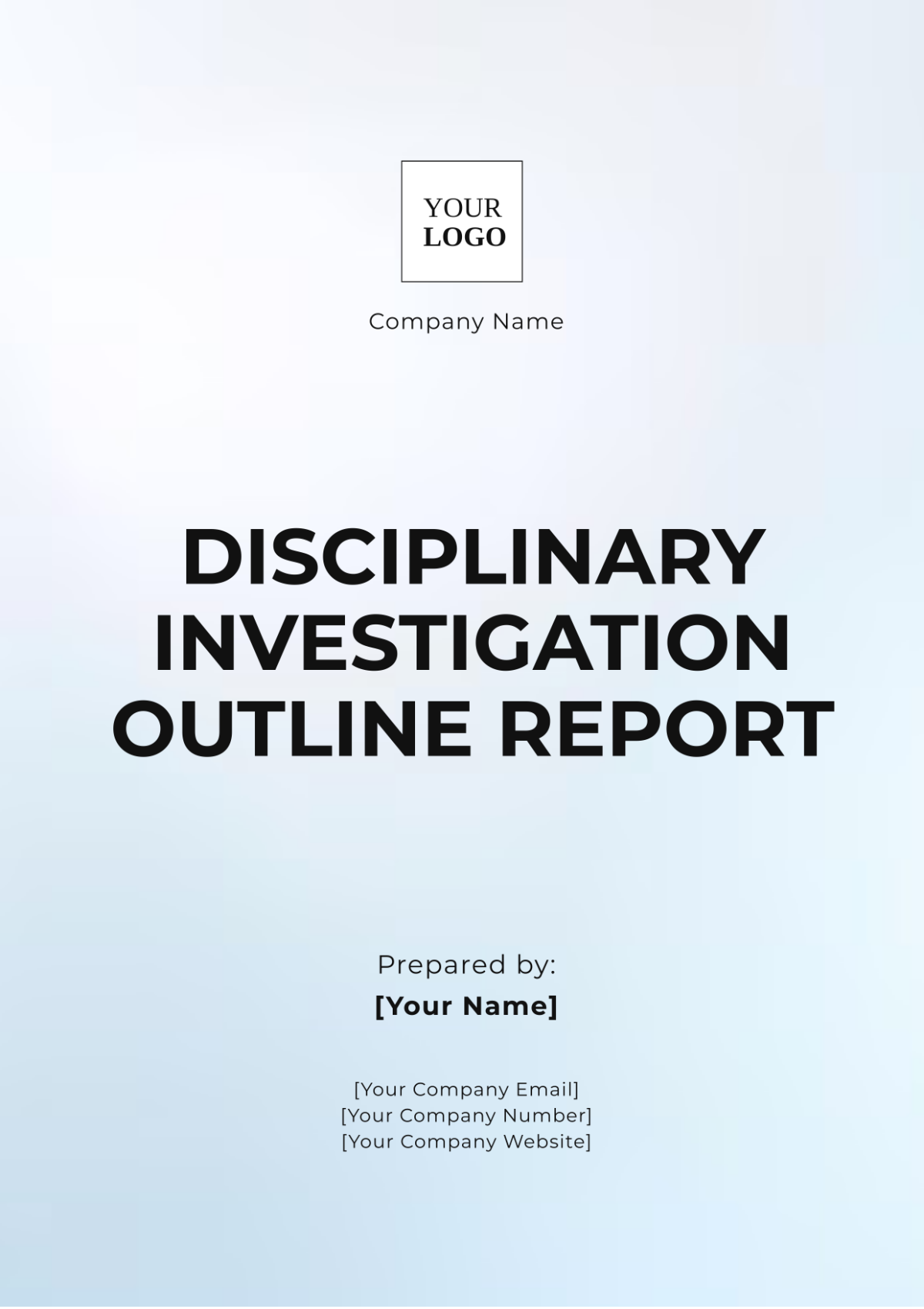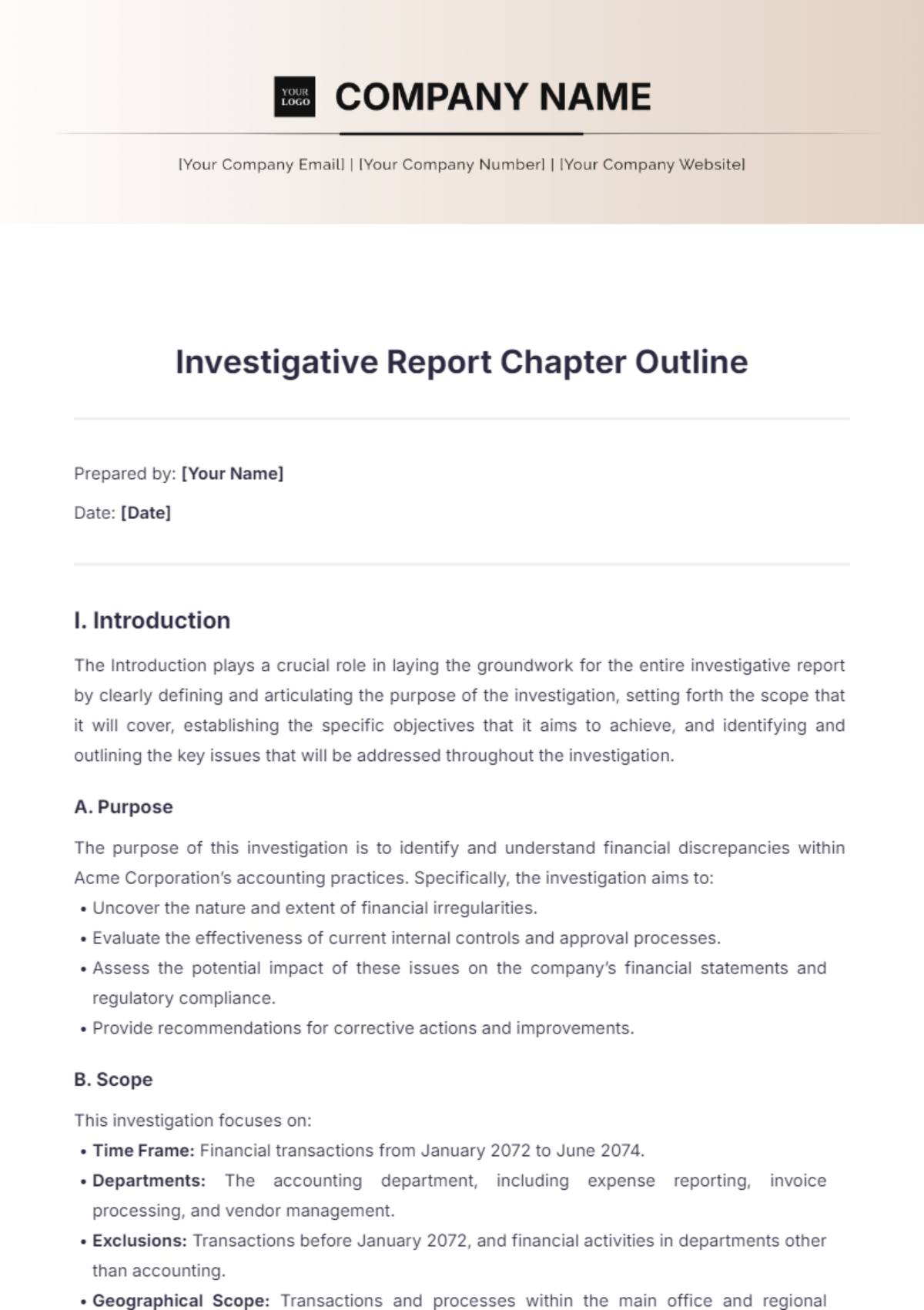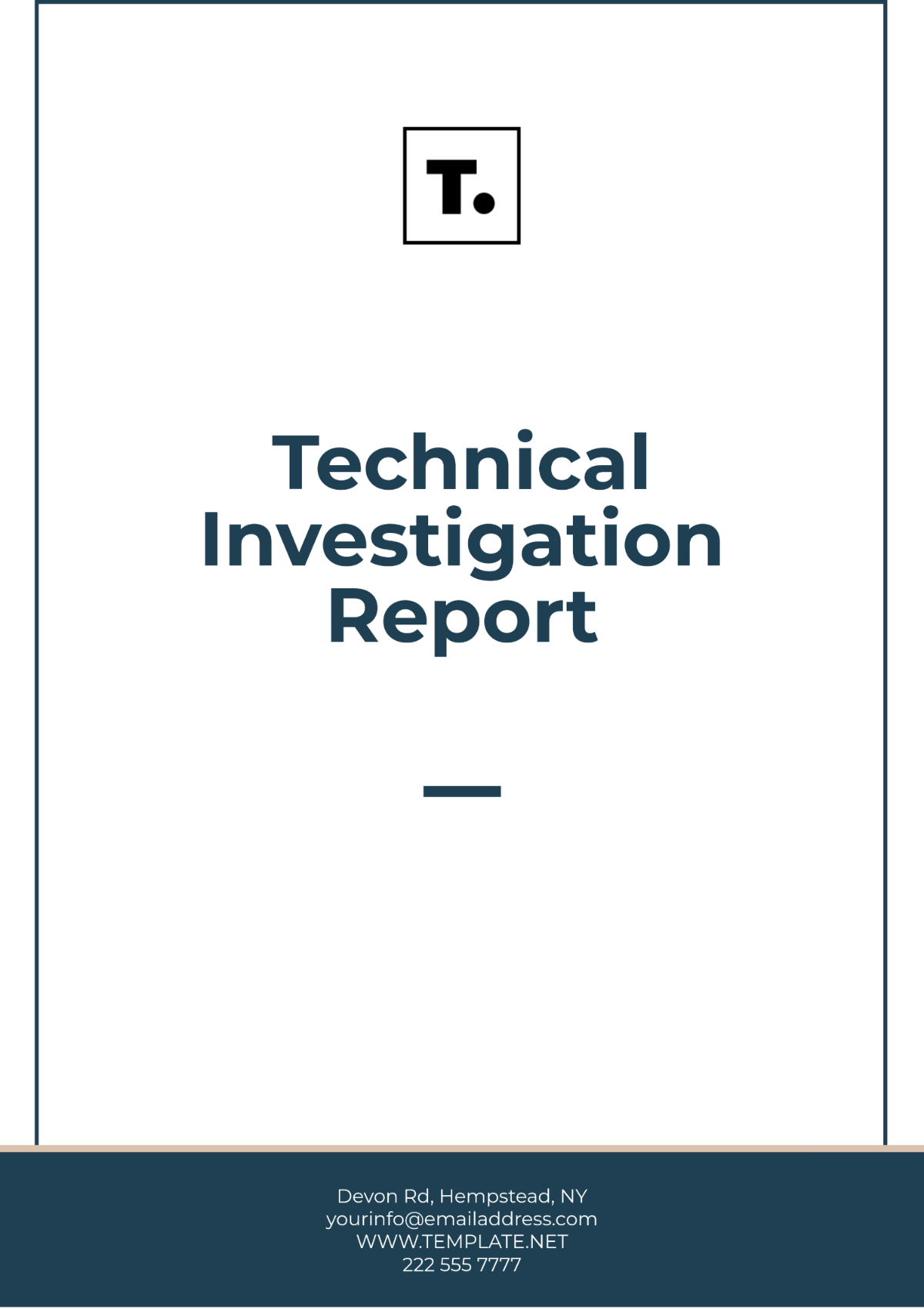Cybersecurity Investigation Report
Prepared By: [Your Name]
Organization: [Your Company Name]
Date: August 20, 2050
Introduction
This report provides a comprehensive analysis of a cybersecurity incident that occurred within the organization. The investigation was initiated following the detection of unusual activity within the network, potentially indicating a breach of security protocols. This document outlines the nature of the incident, the investigative process undertaken, findings, and recommendations for enhancing cybersecurity measures.
Incident Overview
Description of the Incident
On August 15, 2050, the cybersecurity team detected abnormal network traffic patterns, prompting an immediate investigation. The unusual activity included unauthorized access attempts to sensitive data, raising alarms about potential data breaches.
Timeline of Events
Date/Time | Event Description |
|---|---|
August 15, 2050 | Initial detection of abnormal network traffic |
August 15, 2050 | Investigation initiated |
August 16, 2050 | Discovery of unauthorized access attempts |
August 16, 2050 | Forensic analysis of affected systems commenced |
August 17, 2050 | Incident containment measures implemented |
August 18, 2050 | Final report compilation and analysis |
Investigation Process
Methodology
The investigation followed a structured approach, utilizing various cybersecurity tools and techniques to analyze network traffic, access logs, and system integrity. Key steps included:
Data Collection: Gathering logs from firewalls, intrusion detection systems, and servers to identify anomalies.
Forensic Analysis: Conducting a detailed analysis of the collected data to identify the source and nature of the intrusion.
Risk Assessment: Evaluating the potential impact of the breach on organizational data and operations.
Containment Measures: Implement immediate actions to prevent further unauthorized access and limit data exposure.
Tools Used
SIEM (Security Information and Event Management) Software: For real-time monitoring and analysis of security alerts, such as Splunk or IBM QRadar.
Forensic Analysis Tools: Tools like EnCase or FTK were utilized for in-depth investigations of compromised systems.
Network Traffic Analysis Tools: Software like Wireshark or SolarWinds to track unusual patterns and identify potential vulnerabilities.
Findings
Nature of the Breach
The investigation revealed that the breach originated from a compromised user account, which was exploited to gain unauthorized access to sensitive files. Key findings include:
Compromised User Credentials: The attacker gained access through phishing tactics targeting employee credentials. A phishing email containing a malicious link was identified as the entry point.
Data Exfiltration Attempts: Evidence of attempts to download sensitive information, including customer data and internal documents.
Lateral Movement: The attacker moved laterally across the network, attempting to access additional systems, including databases and shared drives.
Impact Assessment
The potential impact of the incident was assessed as follows:
Data Integrity: Compromised data integrity could affect operational capabilities and decision-making processes.
Reputational Damage: Public disclosure of the breach may result in a loss of customer trust and business opportunities.
Regulatory Compliance: Potential violations of data protection regulations, such as GDPR or CCPA, could lead to legal ramifications and fines.
Recommendations
Immediate Actions
Password Reset: Immediately enforce a password reset for all users to mitigate further unauthorized access.
Multi-Factor Authentication: Implement multi-factor authentication (MFA) for all sensitive accounts to enhance security and verify user identity.
Employee Training: Conduct regular cybersecurity awareness training for employees to recognize phishing attempts and other threats, ensuring they understand best practices for security.
Long-Term Strategies
Regular Security Audits: Establish a schedule for routine security assessments to identify and rectify vulnerabilities within the system and infrastructure.
Enhanced Monitoring: Invest in advanced monitoring solutions, such as endpoint detection and response (EDR) systems, to detect anomalies in real-time.
Incident Response Plan: Develop and regularly update an incident response plan to ensure preparedness for future breaches, including clear roles and responsibilities.
Conclusion
The cybersecurity incident underscored the importance of robust security measures and employee vigilance. By implementing the recommendations outlined in this report, organizations can significantly enhance their cybersecurity posture and reduce the likelihood of future incidents. Continuous improvement in cybersecurity practices is vital to safeguarding sensitive information and maintaining operational integrity.

















































